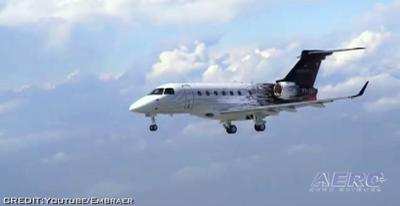Thu, Dec 23, 2021
AD 2021-24-21 Requires Revising The AFM To Incorporate New And Revised Airspeed Limitations And Procedures
The FAA is adopting a new airworthiness directive (AD) for certain Embraer S.A. Model EMB-500 and EMB-505 airplanes.

This AD was prompted by a report that the operational envelope does not contain airspeed limitations and procedures for operating the airplane at static air temperatures below -54 °C. This AD requires revising the airplane flight manual (AFM) to incorporate new and revised airspeed limitations and procedures. The FAA is issuing this AD to address the unsafe condition on these products. This AD is effective January 25, 2022.
Supplementary Information: The FAA issued a notice of proposed rulemaking (NPRM) to amend 14 CFR part 39 by adding an AD that would apply to all Embraer S.A. Model EMB-500 and EMB-505 airplanes with certain engines installed. The NPRM published in the Federal Register on August 2, 2021 (86 FR 41410). The NPRM was prompted by MCAI originated by the Agência Nacional de Aviação Civil (ANAC), which is the aviation authority for Brazil. ANAC issued AD 2020-05-03, effective June 1, 2020 (ANAC AD 2020-05-03) (also referred to after this as “the MCAI”), to correct an unsafe condition on Embraer S.A. Model EMB-500 and EMB-505 airplanes with certain engines installed. Although the affected airplanes were designed for operation at temperatures below -54 °C, the operational envelope in the AFM does not contain the necessary limitations and procedures to operate safely in these colder temperatures.

The MCAI states that operation of the affected airplanes at static air temperatures below -54 °C without these limitations could cause several systems and components to operate inadequately, resulting in multiple systems failures.
Accordingly, the MCAI requires updating the AFM to incorporate a modified operational envelope that establishes restrictions and minimum airspeed required for each static temperature range. In the NPRM, the FAA proposed to require revising the AFM to incorporate the new and revised airspeed limitations and procedures specified in the manufacturer's service information. The FAA is issuing this AD to prevent inadequate operation below the allowable temperature, which could result in multiple systems failures and compromise safe flight of the airplane.
You may examine the MCAI in the AD docket at https://www.regulations.gov by searching for and locating Docket No. FAA-2020-1077.
More News
"The owners envisioned something modern and distinctive, yet deeply meaningful. We collaborated closely to refine the flag design so it complemented the aircraft’s contours w>[...]
Nonradar Arrival An aircraft arriving at an airport without radar service or at an airport served by a radar facility and radar contact has not been established or has been termina>[...]
From 2022 (YouTube Edition): Still Life with Verve David Uhl was born into a family of engineers and artists—a backdrop conducive to his gleaning a keen appreciation for the >[...]
Also: Electra Goes Military, Miami Air Taxi, Hypersonics Lab, MagniX HeliStrom Amazon’s Prime Air drones are back in the spotlight after one of its newest MK30 delivery drone>[...]
Also: Trailblazing Aviator Betty Stewart, Wind Farm Scrutiny, Chatham Ban Overturned, Airbus Shares Dive A Thunderbird pilot, ID'ed alternately as Thunderbird 5 or Thunderbird 6, (>[...]
 Aero-News: Quote of the Day (12.11.25)
Aero-News: Quote of the Day (12.11.25) ANN's Daily Aero-Term (12.11.25): Nonradar Arrival
ANN's Daily Aero-Term (12.11.25): Nonradar Arrival Classic Aero-TV: David Uhl and the Lofty Art of Aircraft Portraiture
Classic Aero-TV: David Uhl and the Lofty Art of Aircraft Portraiture Airborne-NextGen 12.09.25: Amazon Crash, China Rocket Accident, UAV Black Hawk
Airborne-NextGen 12.09.25: Amazon Crash, China Rocket Accident, UAV Black Hawk Airborne 12.05.25: Thunderbird Ejects, Lost Air india 737, Dynon Update
Airborne 12.05.25: Thunderbird Ejects, Lost Air india 737, Dynon Update




